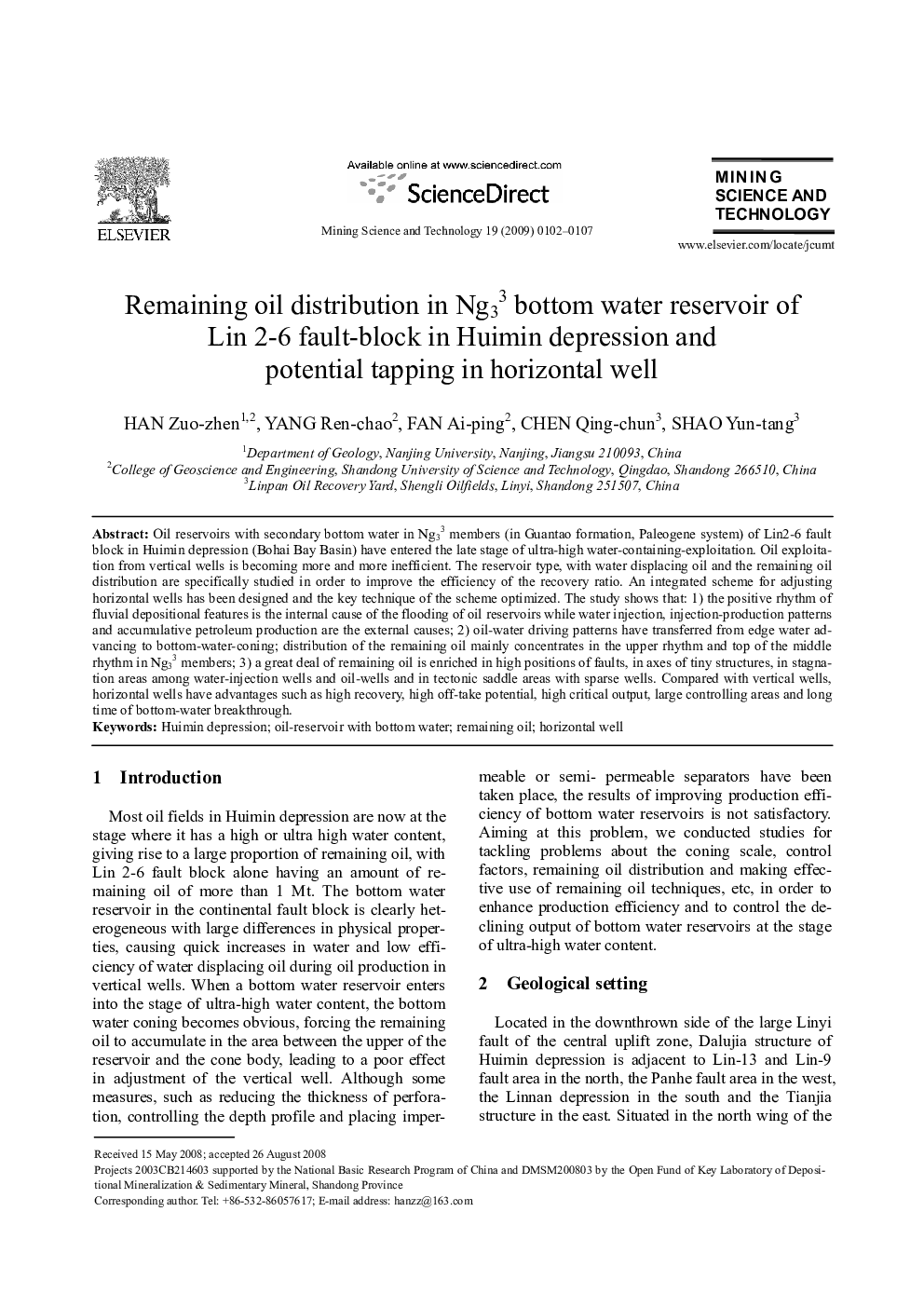| Article ID | Journal | Published Year | Pages | File Type |
|---|---|---|---|---|
| 294883 | Mining Science and Technology (China) | 2009 | 6 Pages |
Oil reservoirs with secondary bottom water in Ng33 members (in Guantao formation, Paleogene system) of Lin2-6 fault block in Huimin depression (Bohai Bay Basin) have entered the late stage of ultra-high water-containing-exploitation. Oil exploitation from vertical wells is becoming more and more inefficient. The reservoir type, with water displacing oil and the remaining oil distribution are specifically studied in order to improve the efficiency of the recovery ratio. An integrated scheme for adjusting horizontal wells has been designed and the key technique of the scheme optimized. The study shows that: 1) the positive rhythm of fluvial depositional features is the internal cause of the flooding of oil reservoirs while water injection, injection-production patterns and accumulative petroleum production are the external causes; 2) oil-water driving patterns have transferred from edge water advancing to bottom-water-coning; distribution of the remaining oil mainly concentrates in the upper rhythm and top of the middle rhythm in Ng33 members; 3) a great deal of remaining oil is enriched in high positions of faults, in axes of tiny structures, in stagnation areas among water-injection wells and oil-wells and in tectonic saddle areas with sparse wells. Compared with vertical wells, horizontal wells have advantages such as high recovery, high off-take potential, high critical output, large controlling areas and long time of bottom-water breakthrough.
